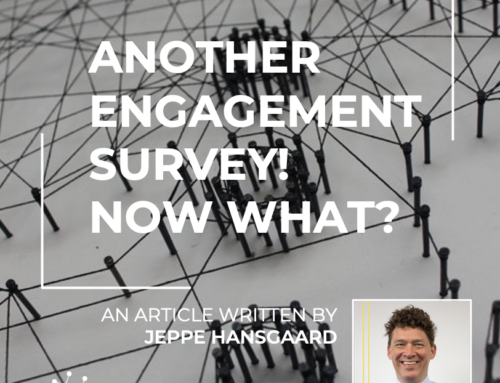FROM OUR CEO
We Have Widespread Ostrich Effects Inside Organizations
September 29th, 2023 | From our CEO

I never really thought of an ostrich as something special until I met one in real life in South Africa. It is fascinating how clumsy it looks and then how fast it can run. Up to 70 km/hour ~40 miles/hour
It does, however, exhibit one behavior that makes it hard to admire as an animal.
According to myth ostriches bury their head in the sand, when scared or frightened.
Making it even more likely to be caught by its predators.
It is All a Myth About Ostriches!
When ostriches put their head into sand, it is because they are digging holes for their rather large eggs. I tell you, you only need one for a really good filling omelet. They do sometimes stand still, when they are afraid, but that is only if they feel, they can blend it with the surroundings.
The myth of them putting their head into the sand, when scared or frightened has undeservedly given name to what is known as the Ostrich Effect – and that one is for real.
The Ostrich Effect is for Real
The Ostrich effect is a cognitive bias, where people tend to “bury their head in the sand” and avoid potentially negative but useful information, such as feedback on progress, to avoid psychological discomfort.
The Ostrich Effect hurts Organizations
This effect is widespread in organizations – especially amongst leaders. You see it, when leaders try to avoid information, such as:
- Physical avoidance: Leaders not attending meetings, where they will be challenged. “My calendar is full… can we maybe book something for next quarter?”
- Inattention: Leaders are not paying attention after information has become available. This is where you hear a leader say “Let’s postpone this until after new year!” Sometimes disguised as a very slow decision process.
- Biased interpretation: Leaders find ways to explain to themselves that this is actually pretty good, or at least not worse than in other companies… so let’s not do anything.
- “Forgettting”: Leaders “forget” something that is unpleasant. Maybe because it involves admitting, they were wrong in the first place. Then it is easier just to forget that new evidence has been presented and hope everybody else will forget as well (They don’t!!!)
80% of Change Programs Suffer from the Ostrich Effect
The Ostrich effect leads to inaction and failure inside organizations. It hurts overall performance. It leads to frustrated and dissatisfied employees. It leads to employee turnover & still it takes place many of the change programs, we are exposed to in Innovisor.
Where leaders are not staying on top of the program, not acting on the evidence collected, or just ignoring what they have kicked-off altogether. About 80% of change programs suffer from the Ostrich Effect, and it is a big blocker for succesful change.
Don’t be that leader!
FROM OUR CEO
We Have Widespread Ostrich Effects Inside Organizations
September 29th, 2023 | From our CEO

I never really thought of an ostrich as something special until I met one in real life in South Africa. It is fascinating how clumsy it looks and then how fast it can run. Up to 70 km/hour ~40 miles/hour
It does, however, exhibit one behavior that makes it hard to admire as an animal.
According to myth ostriches bury their head in the sand, when scared or frightened.
Making it even more likely to be caught by its predators.
It is All a Myth About Ostriches!
When ostriches put their head into sand, it is because they are digging holes for their rather large eggs. I tell you, you only one need for a really good filling omelet. They do sometimes stand still, when they are afraid, but that is only if they feel, they can blend it with the surroundings.
The myth of them putting their head into the sand, when scared or frightened has undeservedly given name to what is known as the Ostrich Effect – and that one is for real.
The Ostrich Effect is for Real
The Ostrich effect is a cognitive bias, where people tend to “bury their head in the sand” and avoid potentially negative but useful information, such as feedback on progress, to avoid psychological discomfort.
The Ostrich Effect hurts Organizations
This effect is widespread in organizations – especially amongst leaders. You see it, when leaders try to avoid information, such as:
- Physical avoidance: Leaders not attending meetings, where they will be challenged. “My calendar is full… can we maybe book something for next quarter?”
- Inattention: Leaders are not paying attention after information has become available. This is where you hear a leader say “Let’s postpone this until after new year!” Sometimes disguised as a very slow decision process.
- Biased interpretation: Leaders find ways to explain to themselves that this is actually pretty good, or at least not worse than in other companies… so let’s not do anything.
- “Forgettting”: Leaders “forget” something that is unpleasant. Maybe because it involves admitting, they were wrong in the first place. Then it is easier just to forget that new evidence has been presented and hope everybody else will forget as well (They don’t!!!)
80% of Change Programs Suffer from the Ostrich Effect
The Ostrich effect leads to inaction and failure inside organizations. It hurts overall performance. It leads to frustrated and dissatisfied employees. It leads to employee turnover & still it takes place many of the change programs, we are exposed to in Innovisor.
Where leaders are not staying on top of the program, not acting on the evidence collected, or just ignoring what they have kicked-off altogether. About 80% of change programs suffer from the Ostrich Effect, and it is a big blocker for succesful change.
Don’t be that leader!
Related articles
Share article
Share article








